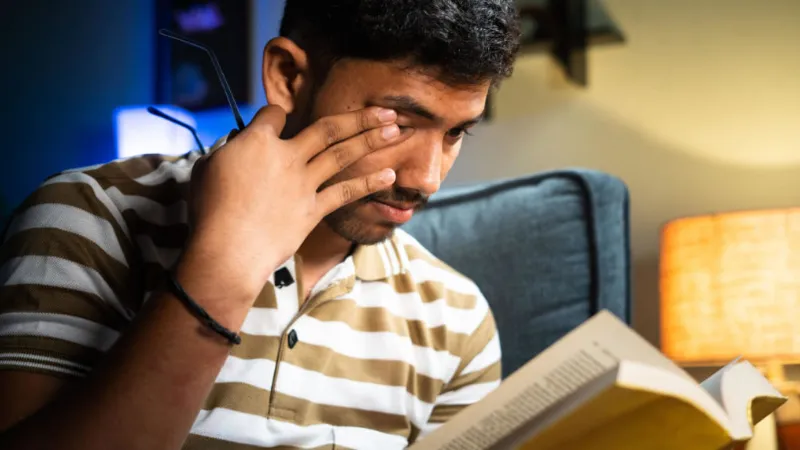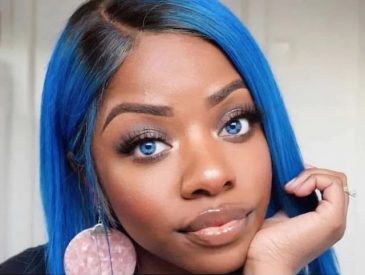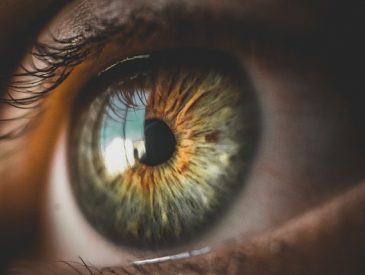In short, enophthalmos, ptosis, proptosis, and normal facial asymmetry are four reasons why is one eye bigger than the other.
Have you ever noticed how unevenly your eyes can appear in photos? It’s a really annoying problem that can change the way you look.
In fact, there is evidence that symmetry is the most significant element that contributes to beauty. Asymmetry of the eyes, or having one eye appear smaller than the other, is a problem that is unfortunately quite widespread. Uneven eyes are typically a congenital condition or can result from aging, trauma, surgery, or eye disease.
It may surprise you to learn that, despite what you may believe, your eyes are typically about the same size. It’s possible that what you’re seeing is a trick.
For more specific information, keep reading.
Table of Contents
Why Is One Eye Bigger Than The Other?
Eye asymmetry is frequently brought on by genetics. You probably share facial features with your parents and other family members, along with your other facial features. It’s likely that if you pay close attention, you’ll see that other members of your family also appear to have one eye that is higher than the other.
The symptoms of other potential causes of uneven eyes are listed below.
Enophthalmos
Enophthalmos, or posterior displacement of the eye, is a condition in which the eye sinks as a result of a change in the area behind it brought on by an injury or illness. Either way, it can develop gradually over time or suddenly.
Enophthalmos most frequently results from trauma, which includes being struck in the face or hitting your face during a car accident. Additionally, it can be brought on by a number of medical conditions, including those that affect the sinus cavity behind the eyes.
Some people only notice their one eye drooping or sinking as their only symptom. Additionally, depending on the underlying cause, you might experience sinus problems, facial pain, or a pulling sensation under the eye.
Enophthalmos may result from the following conditions:
- chronic maxillary sinusitis
- silent sinus syndrome
- Paget disease
- maxillary sinus tumors
- bony defects
Ptosis
Also known as a droopy eyelid, this condition can be congenital (present at birth) or acquired (occur later). Older adults are more likely to develop ptosis. The eyelid droops as a result of the levator muscle, which supports your eyelid, stretching or separating from the eyelid. One eye appears lower than the other because it makes asymmetry in the eyes appear.
Some individuals experience ptosis in both eyes. Ptosis is most frequently brought on by aging, though it can also be brought on by neurological disorders, tumors, and stroke.
Surgery is advised to fix an eyelid that has drooped sufficiently to impair vision. If you so choose, you can also have surgery done for cosmetic purposes.
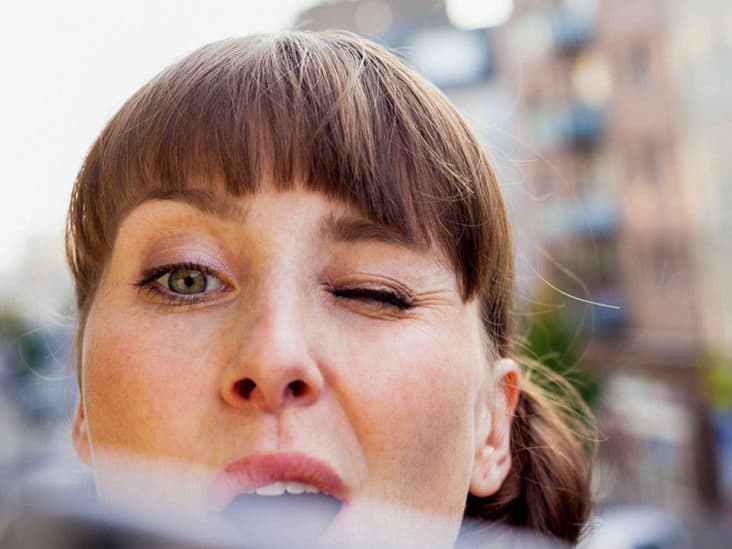
Proptosis
Exophthalmos, another name for proptosis, is the protrusion or bulging of one or both eyes. Adults most frequently develop Graves disease. It causes the tissues around and behind the eye to swell, which forces the eyeball forward. Rarely, tumors, infections, or bleeding can also cause proptosis.
You might also observe: in addition to a change in the appearance of your eye:
- eye pain
- pulsing in the pronounced eye
- fever
- vision problems
Normal Facial Asymmetry
Very few people have facial features that are perfectly symmetrical. The majority of people have some degree of normal facial asymmetry. Your age, gender, and ethnicity all have an impact on this.
One eye may seem higher or lower than the other due to a person’s natural facial asymmetry. Sometimes it’s not the shape of your nose or your uneven eyebrows that give the appearance of uneven eyes.
Asymmetry in the face is frequently brought on by aging. Our skin and soft tissues become less elastic as we get older, which causes the skin around our facial features to sag.
Perfect facial symmetry is viewed as unsettling and unattractive, according to a 2017 review of studies using hemifacial models, which show a person’s ‘unaltered’ face alongside their perfect right-side symmetry and perfect left-side symmetry. Not only is some facial asymmetry normal, but it is also viewed as desirable.
Eyes Treatment: One Eye Bigger Than The Other
Uneven eyes typically don’t require any sort of treatment. Treatment is based on personal preference unless there is an underlying medical condition that needs to be treated or the asymmetry is obstructing your vision.
From at-home makeup techniques to surgical and nonsurgical cosmetic procedures, there are ways to make your eyes appear more symmetrical.
Makeup
Makeup may be able to help your eyes look more evenly spaced. To give the appearance of balance, certain features can be made more noticeable using contouring, highlighting, and other techniques.
Your eyes may look more even if you use an eyebrow pencil or powder to make your brows look more uniform.
You can do this with the aid of online video tutorials. Cosmeticians and makeup artists are frequently employed by department and cosmetic stores, and they can demonstrate how to use various products to enhance your features.
Brow Lift
A brow lift, also known as forehead rejuvenation or a forehead lift, is a cosmetic procedure that raises your brows. Under general anesthesia, a cosmetic surgeon performs it. The surgical procedure known as a brow lift can be carried out using a variety of methods, such as:
- coronal brow lift
- endoscopic brow lift
- hairline brow lift
There are potential risks associated with any surgical procedure, such as infection, bleeding, and scarring.
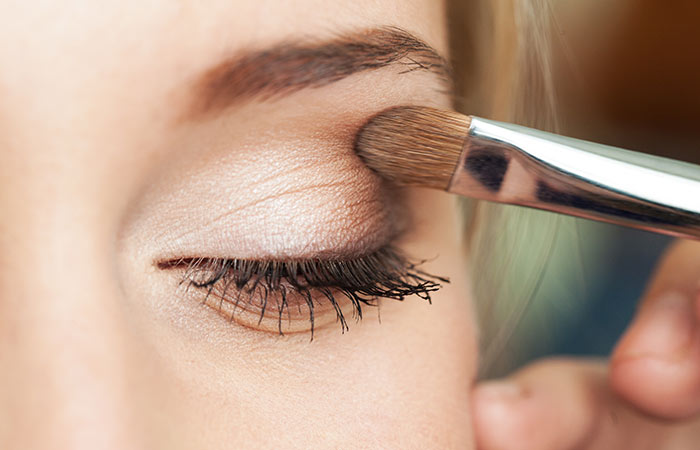
Botox
In some cases, Botox can be applied to temporarily correct uneven eyes. Often, an individual’s asymmetrical eyebrows are what give their eyes an uneven appearance. Brow asymmetries are typical. An alternative to a brow lift that is not surgical is Botox.
To help achieve a balanced appearance, Botox, an injectable muscle relaxant, can be used to relax the muscles in the area around the brow. Results typically persist for four months.
Blepharoplasty
Uneven eyelids can be fixed through cosmetic surgery known as blepharoplasty. Although the procedure doesn’t make your eyes symmetrical, it can make them appear that way even if extra skin or fat is giving your eyes an unbalanced appearance.
Your upper or lower eyelids’ extra tissue, including fat, muscle, and skin, are removed during the procedure. It’s typical to experience two weeks of swelling and bruising. It may take a while for incision scars to disappear.
Orbital Surgery
Your eye socket, or orbit, can be operated on through orbital surgery. Your eyeball, eye muscles, optic nerve, and fat make up the orbit’s four bone walls.
Medical conditions and trauma affecting this area are treated surgically using a variety of techniques. This can involve orbital decompression surgery, which is used to treat exophthalmos brought on by Graves disease and infections, as well as surgery to treat fractures or remove tumors.
Do Nothing
Treatment is not required unless the asymmetry is the result of a medical condition or is causing vision issues. In this instance, the procedure is being done purely out of personal preference and for cosmetic reasons.
Makeup Techniques For Asymmetrical Eyes
Asymmetrical eyes can appear more symmetrical with the use of specialized makeup techniques. Makeup can be used to enlarge a smaller eye or elevate a lower eye on the face.
Makeup artist Sharon Farrell’s eyes look uneven because of a sunken eye brought on by sinus problems. She shares the following tips for getting a more symmetrical look:
- If one of your eyes is sunken, apply dark eyeshadow to the crease of the other eye to make the crease more pronounced and match the other eye. Using a tapered eyeshadow brush, blend the dark shadow.
- Then, apply (less) eyeshadow with a lighter hand to the crease of your sunken eye to compensate for the more prominent natural crease. Thus, the eyes will appear more evenly distributed.
- A medium shade of the eyeshadow used in the creases is used to line the bottom of both eyes, extending it upward and outward to the corners to join it to the crease of each eye.
- Your eyelids should be covered with a medium-dark eyeshadow shade that has been well-blended. A lighter color should be avoided because it will highlight the different amounts of space on each eyelid.
- Return and further define the crease on the eye that isn’t sunken in by using a very dark shade of the same eyeshadow and a very small brush. Along the outside corner of your eye, blend a small amount of this darker shade in a triangle-shaped pattern.
- To make the sunken eye match the eyes, apply the same extremely dark shadow to the outside corner with a fluffy brush. On the sunken eye, do not, however, define the crease.
- Both of your upper eyelids should be lined with eyeliner. You can apply a “wing” of eyeliner and blend it for a smoky look.
To see a makeup artist use this method on her own uneven eyes, you can view Farrell’s tutorial video here.

Celebrities With Asymmetrical Eyes
Many famous people have asymmetrical or uneven eye symmetry. Here are some of the most notable:
- Paris Hilton – Paris Hilton grew up with the nickname “Star” and has been stealing the spotlight ever since. The actress and heiress got her start on the reality show “The Simple Life” and quickly skyrocketed to fame. Due to amblyopia in her left eye (lazy eye), Hilton has asymmetrical eyes. It can impair vision and typically affects one eye.

- Kat Graham – The “Vampire Diaries” actress has facial asymmetry in which her left eye sits noticeably higher than her right eye. Her asymmetry is viewed by many fans as a key component of her distinctive appearance. The asymmetry is less obvious because Graham frequently tilts her head to one side when taking photos.

- Mila Kunis – The actress who got her start on “That 70s Show” and starred in movies such as “Black Swan” and “Bad Moms” has two different-colored eyes due to iritis. Prior to having surgery to replace the lens, Kunis’ vision in one eye was impacted by iritis, a chronic inflammation of the iris. Her right eye is hazel, and her left eye is green.

- Shannen Doherty – The actress who got famous for her role in “Beverly Hills, 90210” has an asymmetrical face and eyes. Doherty’s left eye actually appears to be higher than her right eye.
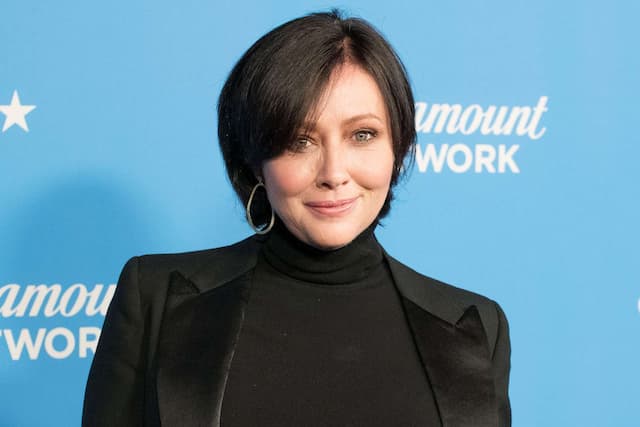
- Thom Yorke, the lead singer of Radiohead, was born with his left eye closed because of issues with his eye muscles. His left eye still differs from his right eye despite having surgery to treat eye drooping on that side later. In an interview, Yorke said he now likes the way his eye looks.

Some celebrities have sought out “asymmetrical eye surgery” from a cosmetic surgeon to try to make their eyes look more even. Many others, however, have accepted their asymmetrical eyes as an integral part of their distinctive appearance.
Should You Be Worried?
While you might be wondering “why is one eye bigger than the other” to yourself. The majority of people have not quite even eyes, is the answer. You shouldn’t be concerned at all as long as you are certain that it is completely normal and isn’t caused by a medical issue or impairs your vision. In actuality, it is incredibly uncommon for asymmetrical eyes to begin with be brought on by a medical condition.
When To Visit A Doctor?
Speak to your doctor about referring you to an ophthalmologist if you have vision issues or other symptoms like eye pain, swelling, or a pulsing sensation in one eye. Visit the emergency room if your eye’s appearance changed as a result of a head or face injury or trauma.
FAQs
Why is One Eye Bigger Than the Other in Photos?
Eyelid asymmetry
Your eyes appear asymmetrical mainly because you appear to have a slightly larger left eye socket than a right one and less soft tissue (skin and fat) covering the upper eyelid on the left side. This makes the eye on that side look “bigger”.
Why Do I Wake Up With One Eye Bigger Than the Other?
Although you may be asking yourself, “why is one eye bigger than the other”? The majority of people have not quite even eyes, is the answer. As long as you are certain that it isn’t caused by a medical issue or that it interferes with your vision, you shouldn’t be concerned in the slightest.
The Bottom Line
Asymmetrical facial features are common and normal. They frequently result from genetics, aging, or lifestyle choices.
Asymmetry in the face is a feature that most people don’t usually notice in others, and studies suggest that it might even be attractive.
However, there are a number of cosmetic procedures and DIY solutions available for those who want to address uneven eyes.
A medical condition may occasionally be the source of facial asymmetry. In these circumstances, addressing the underlying issue might aid in lessening the appearance of uneven eyes.
Speak to your doctor if you have any concerns about your facial asymmetry. Additionally, it is wise to see a doctor if the asymmetry developed suddenly, is causing vision issues, or manifests in other ways.
Please DO LEAVE A COMMENT in the blog comment section below if you have any questions, and I will be happy to assist you.


